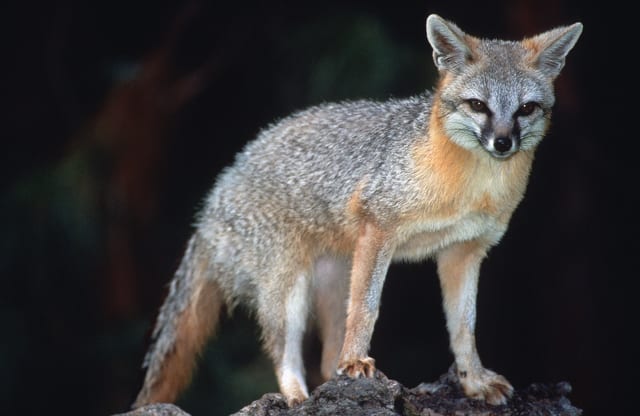Two gray foxes euthanized last week in Lemont tested positive for rabies, the Pennsylvania Game Commission confirmed.
But while people should always exercise caution when encountering wild animals, the cases are not a cause for alarm, a wildlife conservation officer said.
One fox, originally thought to be a coyote, was shot and killed by a resident after it attacked a cat. Another was reported to have been acting aggressively toward a resident and some children and was put down by State College Police.
Both foxes were turned over to the Game Commission for testing. Wildlife Conservation Officer Mike Steingraber, game warden for the State College area, said the foxes were most likely den mates and that he has no reason to believe there are more foxes in the Lemont area with rabies.
Still, he said, there are likely wild animals around the area that do have rabies, something that comes with a region with a lot of wildlife.
Steingraber hasn’t seen an increase in rabid animals this year, but they are not uncommon in the area.
‘We have rabies in our area. We’ve had this here for a long time and we’re probably going to have it a lot longer,’ he said. ‘It’s just something that exists here in a community like State College that is pretty diverse with wildlife. You’re going to have wildlife diseases as well and rabies is part of that.’
Signs of rabies among animals vary, and the only way to be sure if an animal is rabid is to test for it.
In the case of the foxes in Lemont, they were more comfortable around people than would be expected.
‘That’s a sign that there might be something wrong with that animal, or that it had possibly been around people a lot and had been habituated to people,’ he said. ‘When you have a wild animal that is comfortable around people, that usually throws up a red flag for us and we want to investigate a little further.’
A common misconception is that rabid animals will be aggressive and foaming at the mouth. Steingraber said that foxes are the only animals with rabies that he has seen be mildly aggressive. He added that he doesn’t recall ever seeing a rabid animal foaming at the mouth.
Skunks and raccoons, he said, will frequently get rabies and exhibit confusion and difficulty walking.
‘The problem with rabies and those kinds of symptoms are that there are a lot of other things that can cause those exact same kind of symptoms,’ Steingraber said. ‘Rabies is a virus that affects the brain, and there are a lot of other wildlife diseases that do the same thing and cause the same types of symptoms. It’s impossible to diagnose until you actually test for it. You can make some educated guesses when you see them by the way they are acting and the environment they are in, but you just never know for sure until you test for it.’
Steingraber said that another misconception is that seeing a wild animal during the day is a sign there is something wrong with it.
‘They don’t disappear as soon as the sun comes up. They’re going to be out there,’ he said. ‘They’re wild animals and we have a lot of them in the State College area. Once in a while you’re going to have an animal that typically hunts at night that is out during the day. There might not be anything wrong with it at all, it just happened to be out during the daytime that day. We wouldn’t treat it as if it was ill if that was the only thing someone thought was wrong with it.’
For local residents who have a concern about a wild animal, the best thing to do is to contact the Game Commission’s Northcentral Region office at (570) 398-4744. Experts there can help evaluate whether an animal is exhibiting normal behavior or send a local officer to check it out.
‘The point we really want to drive home to people is that wildlife is wildlife and nobody should be having contact with or attempting to have contact with wildlife,’ Steingraber said.’There are probably other animals out there that have rabies. We’re not going to be able to eradicate it, unfortunately. You want to stay vigilant when you encounter wildlife. It’s awesome to view it from a distance, but it’s not something you want to get up close and personal with.’



